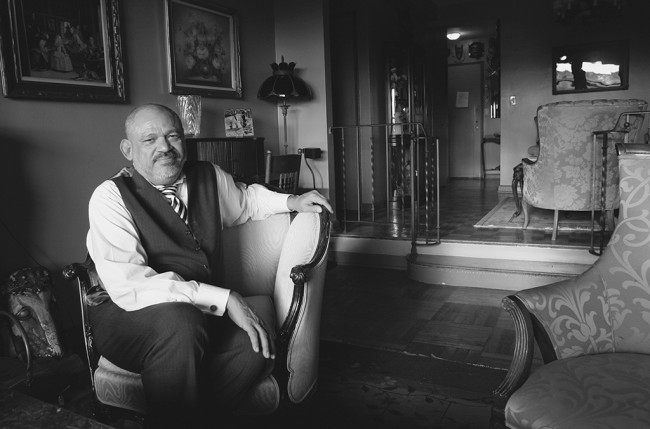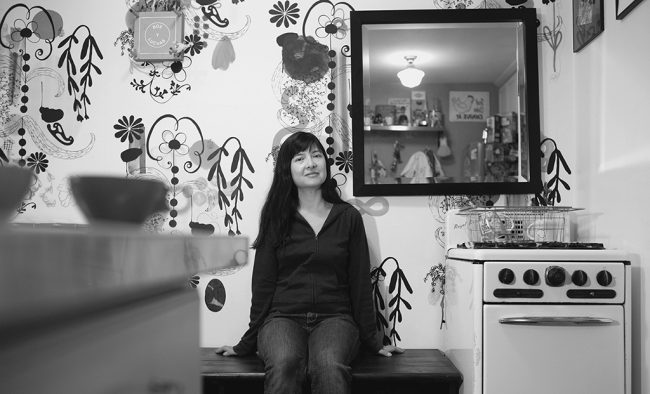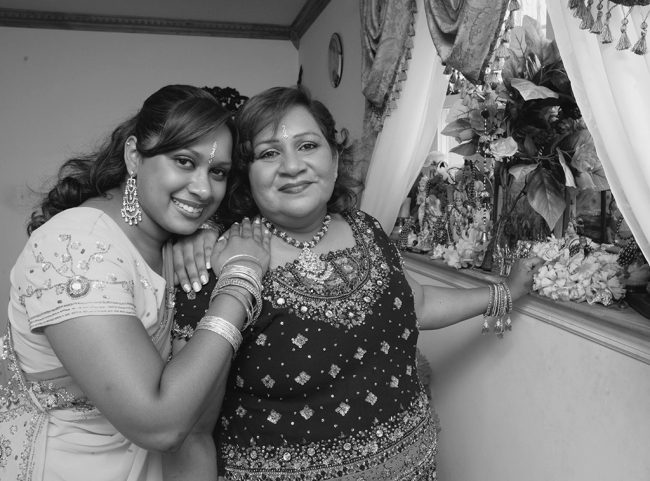
We are celebrating 15 years — and counting — of stories that are deeply researched and deeply felt, that build a historical record of what the city has been.
We are celebrating 15 years — and counting — of stories that are deeply researched and deeply felt, that build a historical record of what the city has been.

Jose Diaz-Oyola, a health care worker from Puerto Rico, in his Art Deco apartment on the Grand Concourse in the Bronx (Photo: Michelle V. Agins/The New York Times)
Constance Rosenblum kicked off the Design Criticism Department at the School for Visual Arts’ Fall Lecture Series last month with a lecture and Q&A about her new book, Habitats: Private Lives in the City. A reporter at The New York Times, Rosenblum’s column, Habitats, ran from the 1990s until 2012. Habitats is a collection of pieces that originally ran in the newspaper, with added content specifically for the book.
The premise for both the column and the book was to show how New Yorkers choose to carve out a space for themselves in the city: where they choose to live, what they choose to surround themselves with, and what stories they choose to tell about their personal experience with urban living. Rosenblum captures their stories without a recording device — arguing that there is less of a tendency to “self-edit” without one — or predetermined agenda and lets her subjects talk at their leisure, sometimes for hours, about what inhabiting New York means to them and challenges they have faced. Living in such a high-density place creates privacy issues. Skyrocketing rents across the city make keeping a home increasingly difficult. What do you do if you don’t speak the language? What if your family/support system is thousands of miles away? Rosenblum asks her subjects to “start from the beginning” — they are free to interpret this however they see fit. The author was fascinated by her subjects’ personal pasts, their “roots” in the city and from afar. You can be an immigrant, a transplant, or a native New Yorker — your relationship to the city is unique and extends past your apartment walls.

Kim Ima, creator of the Treats Truck, in her west Village one-bedroom (Photo: Michael Appleton/The New York Times)
In the book’s introduction, Rosenblum writes that she “wanted to use the column to tell more intimate stories. [She] wanted to use the physical nature of the home as a wedge to delve into personal history, and to produce, as one reader nicely put it, biography through real estate.” Interviewing a subject in his or her own home created a level of comfort not found in more public places such as a park or office. This allowed the author to gather a wealth of information with which to shape her pieces – her interviewees felt relaxed enough to share intimate details of their childhoods, family anecdotes, and tales surrounding acquisitions found in their apartments. A painting, a piece of furniture, or photo might led to an interesting revelation.
Rosenblum travelled to each home by public transit, arriving early to wander around the neighborhood and garner a sense of place. These impressions influenced the final pieces subtly, as she made the resident(s) the focus of every story. From public housing projects in the Bronx to beach bungalows on Rockaway dunes in Queens, city dwellers enthusiastically offered to tell their tales of urban domestic life. She carefully chose her subjects to represent all the boroughs and explore a range of living situations; the grand Victorian mansion gets the same treatment as the New York City Housing Authority complex.

Bharati Kemraj and her mother in the house next to her father’s Hindu Temple in Soundview in the Bronx (Photo: Chester Higgins Jr./The New York Times)
The book reads as a people’s history of New York City. José Diaz-Oyola, a Puerto Rican immigrant, has lived in the same building on the Grand Concourse in the Bronx for over 30 years. He works tirelessly to promote a sense of community in a neighborhood, serves on the community board and hosts an annual Christmas gathering for locals in his building and surrounding apartments. Carolita Johnson and Michael Crawford are a couple who both work as illustrators for The New Yorker and found affordable live/work situations outside of traditional artists haunts like Bushwick and Gowanus. Their three-bedroom apartment in Inwood boasts an enviable amount of sunlight, views of The Cloisters and surrounding Fort Tryon Park, and separate studio spaces for a reasonable amount (by New York standards). Jennifer Acosta bought her house in Woodhaven, Queens, with her two older siblings. Each member of the family lives on a separate floor with his or her respective spouse and children. Everyone pitches in to help with paying bills, general maintenance and upkeep, and occasionally shoveling snow during the winter months. The siblings enjoy having extended family close by; it makes living far away from their parents in Ecuador easier. Mary Sansone, a longtime resident of Borough Park, Brooklyn, has been an activist and supporter of political causes since her father brought her to a rally in Union Square when she was just eight years old. Ms. Sansone has founded and taken part in numerous organizations, promoting civil rights, equality for ethnicities, and more. A nonagenarian, she has received accolades from President Obama, Mayor Bloomberg, and civil rights leader Bayard Rustin for her efforts. The Brown Family in Stapleton, Staten Island, have renovated a majestic, eight-bedroom Victorian home to its prior grandeur through meticulous refurbishments. Dr. Ted Brown has since joined the Mud Lane Society (a group devoted to preservation of city landmarks) and is interested in diving deeper into the history of his residential relic.
Habitats is a book rich with poignant, colorful, and endearing portraits of the common New Yorker. The stories showcase people proud of their homes and happy to share them with others. The multiple perspectives create a very real, comprehensive account of what it is like to live in the city today, what came before, and why this matters.
The views expressed here are those of the authors only and do not reflect the position of The Architectural League of New York.